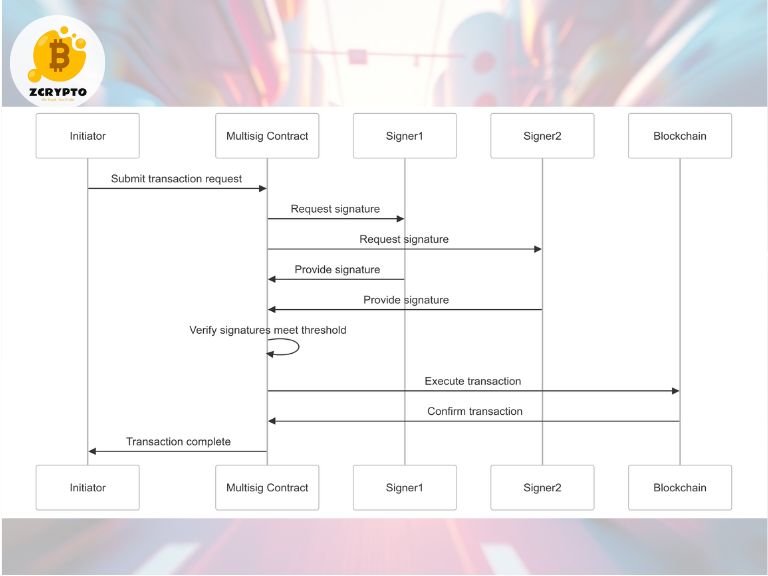Mastering Asset Allocation: A Guide to Optimizing Your Investment Portfolio
Investing in the financial markets can be a daunting task, especially when it comes to managing your portfolio. One of the most critical components of successful investing is asset allocation. This strategy involves dividing your investments among different asset classes to optimize returns while minimizing risk. In this guide, we will delve into the importance of asset allocation, how to determine your ideal allocation, various strategies for implementing it, and how to maintain and rebalance your portfolio over time.
- What is Multisig? A Technical Analysis of Multi-Signature Security
- Understanding Book Runners: The Key Players in IPOs, Leveraged Buyouts, and Securities Issuance
- Mastering Acquisition Financing: Strategies, Structures, and Benefits for Business Growth
- Establishing a Baseline: Your Foundation for Smart Investments and Financial Growth
- Mastering Affiliate Marketing in Finance: Top Strategies and High-Paying Programs for 2024
The Importance of Asset Allocation
Asset allocation is often cited as the single most important factor in determining the performance of an investment portfolio. Studies have consistently shown that asset allocation accounts for a significant portion of a portfolio’s returns and risk management[1][3][5]. Here’s why it’s so crucial:
– Diversification: By spreading investments across different asset classes such as stocks, bonds, and cash equivalents, you can reduce the risk associated with any single investment.
– Risk Management: Proper asset allocation helps in managing risk by balancing high-risk investments with lower-risk ones.
– Long-term Growth: It ensures that your portfolio is aligned with your long-term financial goals, whether it’s retirement savings or funding education.
The benefits of proper asset allocation are clear: reduced risk and enhanced returns. It’s a strategy that helps you sleep better at night while your money works harder for you.
Determining Your Asset Allocation
Assessing Your Risk Tolerance
Before you can determine your ideal asset allocation, you need to assess your risk tolerance. This involves understanding how much volatility you can stomach and how it impacts your investment decisions. For example:
– High-risk tolerance might lead you to allocate more to stocks.
– Conservative investors might prefer bonds or cash equivalents[1][4][5].
Here’s a simple way to think about it:
– If you’re young and have a long time horizon, you might be more comfortable with higher-risk investments.
– If you’re nearing retirement, you may want to shift towards more conservative assets.
Understanding Asset Classes
Each asset class has its own characteristics:
– Stocks: Offer potential for high returns but come with higher volatility.
– Bonds: Generally provide stable income but lower returns compared to stocks.
– Cash Equivalents: Low-risk investments like money market funds or savings accounts.
Understanding these profiles helps you make informed decisions about where to allocate your funds.
Time Horizon and Financial Goals
Your time horizon and specific financial goals also play a significant role in determining your asset allocation. For instance:
– If you’re saving for retirement 20 years away, you might allocate more aggressively towards stocks.
– If you’re saving for a down payment on a house in the next few years, you might opt for more conservative investments[4][5].
Strategies for Asset Allocation
There are several strategies to implement asset allocation effectively:
Bạn đang xem: Mastering Asset Allocation: A Guide to Optimizing Your Investment Portfolio
Strategic Asset Allocation
This long-term approach involves setting target allocations for different asset classes and periodically rebalancing to maintain these targets[1][3][4]. The key here is consistency:
– Regularly review and adjust your portfolio to ensure it remains aligned with your long-term goals.
Tactical Asset Allocation
Xem thêm : How Businesses and Investors Can Mitigate Racial Inequity Risk in a Post-Affirmative Action Economy
This dynamic approach involves adjusting the portfolio based on short-term market conditions or economic forecasts. It requires active management and a good understanding of market trends[1][3].
Dynamic Asset Allocation
This strategy involves ongoing adjustments based on market conditions to reduce risk during downturns and increase exposure during upswings[3]. It’s about being proactive rather than reactive.
Constant-Weighting Asset Allocation
This involves maintaining set proportions of different assets and frequent rebalancing to stick to these percentages[3]. For example:
– You decide to keep 60% in stocks, 30% in bonds, and 10% in cash equivalents. You rebalance regularly to maintain these proportions.
Integrated Asset Allocation
Xem thêm : Find a Trusted Certified Public Accountant (CPA) for Expert Financial Guidance
This combines elements of strategic and tactical approaches to optimize the portfolio based on long-term goals and current market conditions[3]. It’s about finding a balance between consistency and adaptability.
Selecting and Calculating Asset Weights
Assigning Optimization Weights
Assigning weights to different asset classes involves balancing risk and return tolerance. Here’s an example:
– If you decide that stocks should make up 50% of your portfolio because you have a moderate risk tolerance, you would allocate accordingly[2].
Balancing Risk and Return
The concept of the efficient frontier helps you maximize returns within a given risk level. It’s about finding that sweet spot where you get the best possible return for the amount of risk you’re willing to take[2].
Implementing and Rebalancing Your Portfolio
Initial Portfolio Setup
Setting up an initial portfolio involves allocating your funds according to your chosen strategy. Here’s how you can do it:
– Start by determining your overall asset allocation based on your risk tolerance, time horizon, and financial goals.
– Allocate funds accordingly across different asset classes.
Regular Portfolio Review
Regularly reviewing your portfolio is crucial to ensure it remains aligned with your financial goals and risk tolerance. Here’s what you should do:
– Schedule regular reviews (e.g., quarterly or annually).
– Rebalance your portfolio as needed to maintain target allocations[1][4][5].
Case Studies and Examples
Let’s look at some real-world examples:
– Conservative Investor: John is nearing retirement and prefers low-risk investments. He allocates 70% to bonds, 20% to cash equivalents, and 10% to stocks.
– Aggressive Investor: Sarah is young and has a high-risk tolerance. She allocates 80% to stocks, 15% to bonds, and 5% to cash equivalents.
These examples illustrate how different investors with varying risk tolerances and financial goals might allocate their assets.
Additional Resources
For further guidance:
– Consider consulting with a financial advisor who can provide personalized advice.
– Utilize investment models available from reputable firms like Vanguard.
– Read books such as “A Random Walk Down Wall Street” by Burton G. Malkiel or “The Intelligent Investor” by Benjamin Graham for deeper insights into asset allocation strategies[4].
By leveraging these resources along with the strategies outlined here, you’ll be well on your way to mastering asset allocation and achieving your financial goals.
Nguồn: https://horizontalline.icu
Danh mục: Blog







